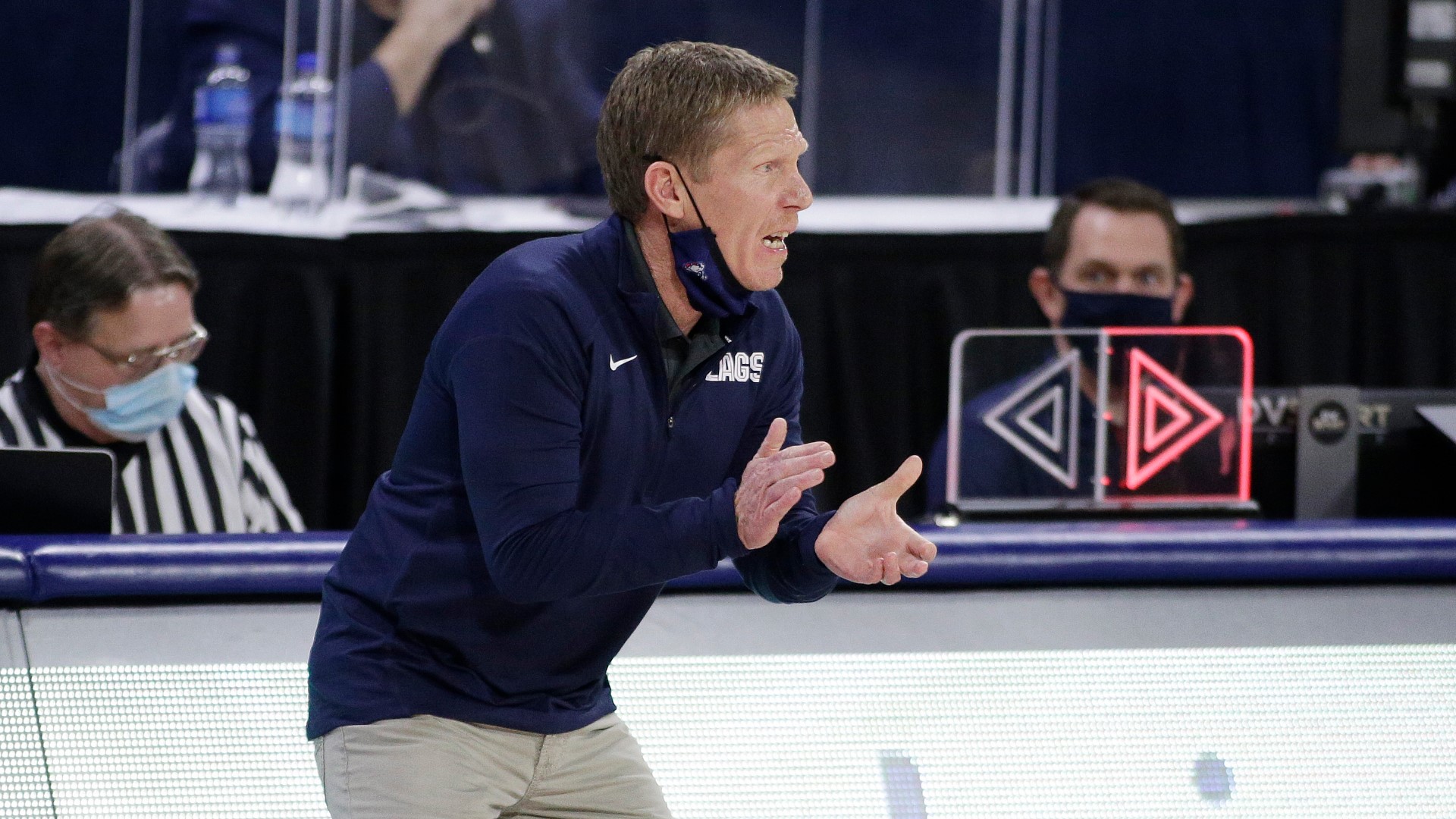SPOKANE, Wash. — When you walk into the McCarthey Athletic Center you see three jerseys up in the rafters.
Two don't need much of an explanation. Adam Morrison and John Stockton are pretty well-known guys.
However, the third, Frank Burgess, is a name not as many fans are familiar with.
In honor of Black History Month, here's the story of a man who was dominant in multiple courts.
HOW GERMANY LED BURGESS TO GONZAGA
Frank Burgess grew up in Arkansas in the 1950's and went to the school that is now known as Arkansas Pine-Bluff for a year before joining the Air Force. Ironically, it was not in college, but in the Air Force, where the legend of his basketball game truly began.
While playing for the Hahn Air Force Base team in Germany in 1957, he averaged 33.4 points per game according to an article written by Steve Robinson and was picked as one of the ten best Air Force basketball players in the world.
So, how did that lead him to Gonzaga?


Well, Burgess had a friend in the Air Force who went to GU and kept telling him how great of a school it was while this friend was simultaneously letting the basketball coach at GU know about Burgess.
Burgess visited Gonzaga while he was also getting recruited by a bunch of other schools including Arkansas, USC, and Kansas.
You must be wondering what exactly would cause him to pick Gonzaga, which was transitioning from being an NAIA school to a Division I school, over those other illustrious, well established programs?
When Burgess visited, he sat down with GU's president who talked to him about how getting an education was important as well. Burgess said that Gonzaga was the only school that seemed to value him as a person, rather than as just a basketball player, and that's what sold him.
THE BEST BULLDOG
Due to playing at Arkansas Pine-Bluff, Burgess had three years of eligibility remaining when he got to Gonzaga.
His first year at GU he averaged 23.2 points. He upped that his junior year to 28.9 points. That year he was named a second team All-American by one publication.


His senior year he was even more dominant. At one point he put together back-to-back-to-back 40 plus point games and had a 52-point game against UC Davis, which is still the most points scored in a single game by a Gonzaga player ever. And yes, the 32.4 points he averaged per game his senior year is also still a program record for points averaged in a season. Unsurprisingly, he led the nation in scoring that year and this time was named a consensus second team All-American.


The accomplishments don't stop there. Burgess still holds the record for the most career points in Gonzaga history with 2,195. Keep in mind—He only played three seasons at GU. The person who's the next closest with points played five seasons. Oh, and there weren't threes when Burgess played. What he did in three seasons without three pointers is truly phenomenal and with how college basketball is now with players leaving for the NBA early, Burgess' record will simply never be broken.
He wasn't just a shooter either. Burgess had 595 rebounds in his career. That puts him in the top 20 in rebounds in program history.
He also was well liked by his classmates, as he was named class president.


FROM ONE COURT TO ANOTHER
After his senior year in 1961, Burgess was drafted by the Lakers but opted to play for Hawaii's ABL team. He played two seasons for them before returning to GU to go to law school, which he graduated from in 1966.
According to Gonzaga, he was near the top of his class all while working the midnight shift for Washington Water Power and raising several children.


Out of college he worked as a lawyer in Tacoma before he became a judge in 1981. He was appointed a full federal judge by Bill Clinton in 1994.
According to a Gonzaga Bulletin article, Burgess presided over several high-profile cases including the case against the Makah Indians' tribal tradition of killing whales in 1999.
Burgess' jersey was finally retired in 2005, right after John Stockton's was retired in 2004.


On March 26th, 2010 Burgess died from cancer at the age of 75.
I would say what a life both on and off of the court, but it's more fitting to say what a life in multiple courts.]


